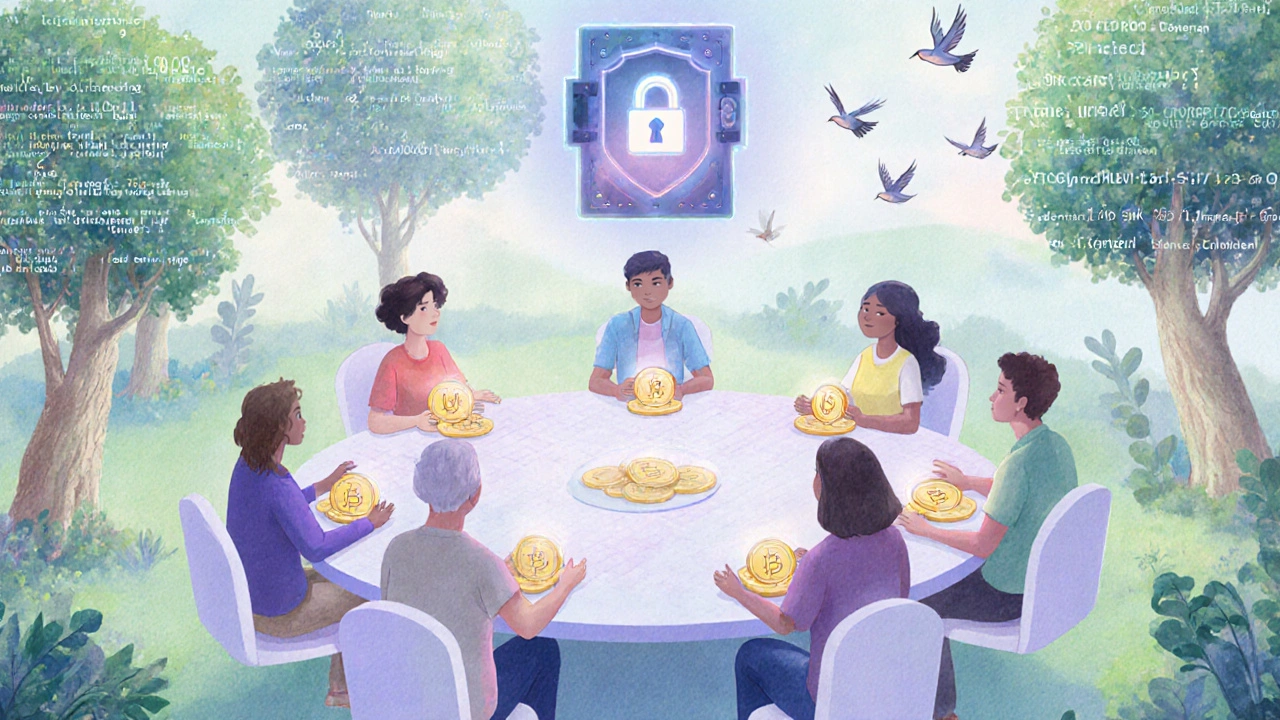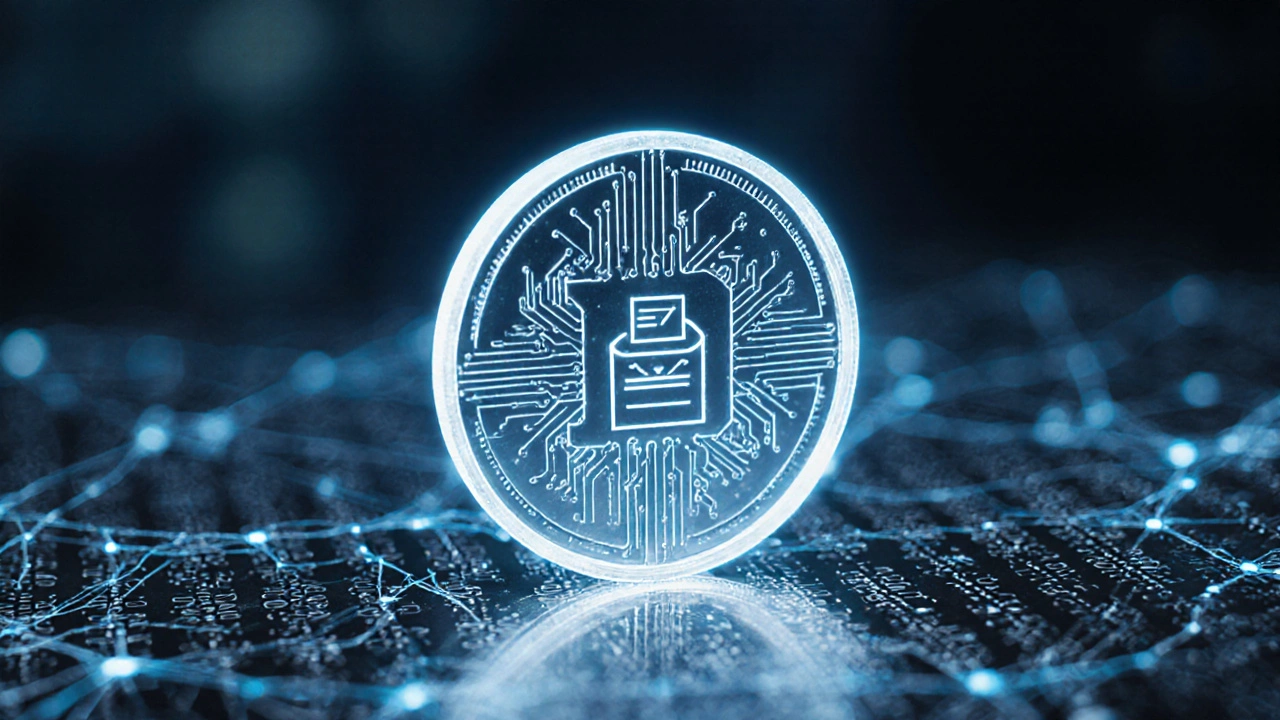Ever wondered why crypto projects let token holders call the shots? The secret sauce is a Governance Token is a digital asset that grants its owner voting rights over a protocol’s future decisions. In the fast‑moving world of decentralized finance, these tokens are how communities steer upgrades, fee structures, and even spend treasury funds without a central board. This guide breaks down the mechanics so you can see exactly how governance tokens turn code into collective choice.
Key Takeaways
- Governance tokens give holders voting power on protocol upgrades, parameter changes, and treasury spendings.
- Voting is executed by smart contracts on a blockchain, ensuring transparency and immutability.
- Different voting models (single‑choice, quadratic, weighted) balance influence between whales and regular users.
- Token distribution, lock‑ups, and incentive structures shape who actually participates.
- Risks include low participation, voter apathy, and the possibility of governance attacks.
What Exactly Is a Governance Token?
A governance token is a token that encodes voting rights directly into its smart contract logic. Unlike utility tokens that merely grant access to a service, or security tokens that represent equity, governance tokens let holders propose and vote on protocol changes. The token’s on‑chain record shows each holder’s balance, making the voting weight auditable at any time.
How On‑Chain Decision Making Works
Every governance action lives on a smart contract that defines the proposal lifecycle: creation, voting, and execution. When a token holder submits a proposal, the contract locks a small amount of tokens as a spam‑deterrent. Once the voting window opens, each address casts a vote by calling a function that records their choice along with the number of tokens they hold at that snapshot.
The voting result is tallied automatically by the contract. If the proposal meets predefined thresholds-such as a minimum quorum and a majority percentage-another function can trigger the execution step, which might adjust fee rates, add a new market, or move treasury funds.
Token Distribution and Holder Rights
Who gets to vote depends heavily on how the token was initially distributed. Common models include:
- Liquidity mining rewards: Tokens are earned by providing liquidity to a DEX.
- Founders and team allocations: Usually vested over several years to prevent early dumps.
- Community airdrops: Small amounts to early adopters to bootstrap participation.
After distribution, many projects lock a portion of tokens (staking) to increase voting engagement. Locked tokens often earn additional rewards, creating an incentive loop: more stake → more voting power → higher chances of influencing profitable decisions.
Voting Mechanics: From Simple to Sophisticated
Four common voting models dominate the ecosystem:
- Single‑choice (one‑token‑one‑vote): Each token counts as one vote. Simple but favours large holders.
- Weighted voting: Votes are multiplied by a factor, such as the token’s age or a reputation score.
- Quadratic voting: The cost of each additional vote grows quadratically, limiting the impact of whales.
- Approval voting: Voters can endorse multiple proposals, useful for multi‑parameter upgrades.
Choosing the right model is a balancing act. Projects that want broad participation often adopt quadratic voting, while those that need fast, decisive action may stick with weighted or single‑choice voting.
Tokenomics: Incentives That Keep Governance Alive
Token economics (or tokenomics) define how new tokens are minted, burned, or reallocated based on governance outcomes. Typical incentives include:
- Reward for voting: A small amount of newly minted tokens is distributed to active voters.
- Slashing penalties: If a voter proposes a malicious change that gets rejected, part of their stake may be burned.
- Fee redistribution: Successful proposals that increase protocol revenue can allocate a share back to token stakers.
These mechanisms align individual interest with the health of the whole network, encouraging holders to stay engaged.
Real‑World Examples
Here are three flagship governance tokens and how they operate:
- Uniswap (UNI): Holds a 0.3% fee share of the DEX. UNI holders can vote on fee adjustments, new token listings, and treasury allocations. Proposals require a 1% quorum and a simple majority.
- MakerDAO (MKR): Controls the stability fee and collateral types for the DAI stablecoin. MKR voting uses a “governance spell” that, once passed, automatically updates the system's risk parameters.
- Compound (COMP): Allows holders to propose changes to the interest‑rate model and add new asset markets. COMP uses a 400,000‑vote quorum (about 0.5% of total supply) to prevent spam.
All three run entirely on Ethereum, leveraging its robust smart‑contract environment to enforce decisions without a central authority.

Risks and Common Pitfalls
Governance sounds democratic, but it comes with challenges:
- Low voter turnout: If only a few whales vote, the result may not reflect community sentiment.
- Governance attacks: Malicious actors can acquire enough tokens to push harmful proposals, especially in low‑liquidity projects.
- Complexity fatigue: Overly intricate voting mechanisms deter participation, leading to decisions being made by a small core group.
- Regulatory uncertainty: Some jurisdictions may treat governance tokens as securities, exposing holders to legal risk.
Smart‑contract bugs are also a reality. A flawed voting contract could be exploited to alter outcomes or freeze assets. Audits and formal verification are now standard best practices.
Governance Token vs. Utility Token vs. Security Token
| Aspect | Governance Token | Utility Token | Security Token |
|---|---|---|---|
| Primary Purpose | Voting & protocol control | Access to a product/service | Investment contract / equity |
| Regulatory Treatment | Often ambiguous, depends on function | Generally unregulated | Subject to securities law |
| Value Drivers | Governance participation & protocol health | Network usage & demand | Profit sharing & ownership rights |
| Typical Distribution | Airdrop, liquidity mining, team vesting | Pre‑sale, public sale, incentives | Private placement, accredited investors |
| Voting Mechanism | On‑chain voting via smart contracts | None | Shareholder voting (off‑chain) |
Getting Started: How to Participate in Governance
- Choose a protocol you trust (e.g., Uniswap, MakerDAO, Compound).
- Acquire the governance token on a reputable exchange or via liquidity mining.
- Transfer the tokens to a non‑custodial wallet that supports contract interactions (MetaMask, Trust Wallet, etc.).
- Connect your wallet to the protocol’s governance portal.
- Review active proposals, vote using the built‑in interface, and optionally create your own proposal if you meet the minimum stake.
- Monitor the execution of passed proposals through the blockchain explorer.
Remember to lock your tokens if the platform offers staking rewards-this not only boosts your voting power but also earns you extra tokens over time.
Frequently Asked Questions
Do I need to hold a large amount of tokens to influence decisions?
Not necessarily. Projects that use quadratic voting or low quorum thresholds let smaller holders have meaningful impact. However, large holders still wield proportional influence in single‑choice models.
Can I sell my governance tokens after voting?
Yes, most tokens are freely tradable on secondary markets. Some protocols require a short lock‑up period after you vote, but that varies by project.
What happens if a proposal is malicious?
Many systems include safety checks, such as timelocks and multi‑sig execution, to give the community time to react. In extreme cases, a hard fork can be initiated to roll back harmful changes.
Are governance tokens taxed?
Tax treatment depends on jurisdiction. In the U.S., the IRS may view token sales as capital gains, while voting activity itself is usually not a taxable event. Consult a tax professional.
How do I create a proposal?
First, check the protocol’s minimum stake requirement (often a few thousand tokens). Then, use the governance UI to fill out the proposal title, description, and the contract call you want to execute. Submit and wait for the voting period to start.
Governance tokens are reshaping how financial products evolve. By understanding the mechanics, incentives, and risks, you can move from a passive holder to an active participant who helps steer the future of decentralized networks.


